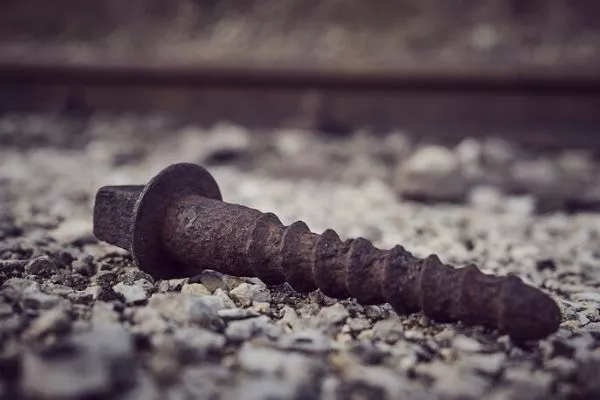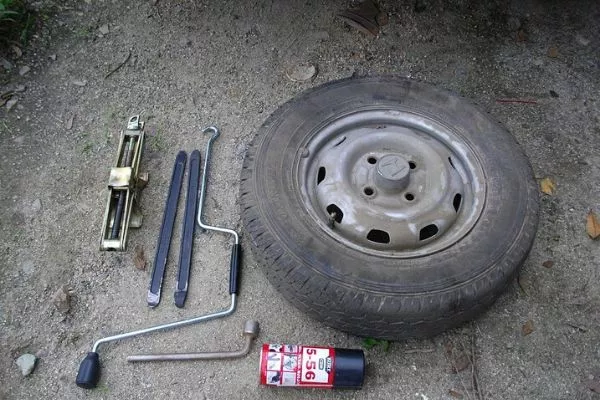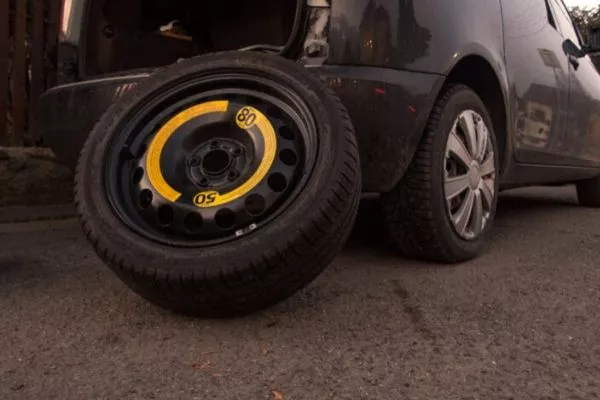It’s not an ideal situation, but a flat tire is an inseparable part of car ownership. You’ll never know when some rusty screw or stray nail will wreak havoc on your tire (and your journey).
Worse, you won’t always get an opportunity to have the car limp to the nearest vulcanizing shop or gas station.

The bane of all motorists on the road
Changing a flat tire looks simple enough: jack up the car, replace the tire with a spare, and soon you can get going again.
But the importance of doing things properly for safety can’t be emphasized enough, especially when it involves a machine that weighs at least a ton (or thereabouts). Otherwise, a simple flat tire will be the least of your problems.
Keep these things in mind when changing a flat tire:
Do have the necessary tools
At the very least, you’ll need to have a hydraulic jack with the accompanying rod.

Always have these in the car on every drive
A tire wrench is also necessary, both to loosen the lug nuts on the flat tire and to remove the spare tire from its mounting, whether inside or outside the car. An early warning device is also a must. All these are standard accessories on every new car.
>>> Related: How to remove tire from rim
Do mind the jacking points
Practically all cars share the same idea of having four wheels, an engine, and a steering wheel. For everything else, they’re built just a little bit differently from each other.
That includes where the jacks should be positioned in the underbody. It’s a good idea to read your car’s user manual in advance, which locates the proper jacking points for your particular model.
Do engage the parking brake
Before you get to work on changing the tire, you’ll need to make sure that the car is stable. Having the car move at any time poses a danger not only to yourself but to other road users.

The handbrake prevents your car from making unnecessary movements
Engaging the parking brake locks the rear wheels in place to prevent the car from moving unnecessarily. Even better, you can place a wheel chock or rocks on the other tires for extra security, especially if you’re at an incline.
>>> Related: Fix-a-Flat and Tire Pressure Monitoring System: What you need to know
Do wear protective gloves
As your car’s point of contact with the ground, tires are surrounded by muck and grime. A pair of leather or even latex gloves helps protect your hands while you handle a dirty tire.

It's a good idea to wear gloves while changing a flat tire
Although working on a car always is a manual activity, there’s no reason not to stay hygienic while doing so. Plus, it lessens the risk of injuries.
>>> Related: Benefits & drawbacks of tubeless tires, Run-flat tires & self-inflating tires
Don’t ignore the right jack
Your car should be equipped with the proper jack for its weight.

Make sure you have the right jack for your vehicle
Standard-sized cars can safely use a jack rated at one-and-a-half tons, while larger cars such as SUVs will require at least a jack with a 3-ton rating. Using a smaller jack on a bigger car could result in damage to both.
Don’t loosen the lug nuts after lifting the car
If you jack up the car first, it will be more difficult to loosen the nuts since the wheel will just spin in the air. This is also dangerous since the increased effort will wobble the car.
Loosening the lug nuts prior to applying the jack makes it easier to remove them (and the wheel) once the car has been lifted.
Don’t forget to bring out the spare first
Another thing to remember before using the jack is to take out the spare tire first when the car is much more stable.

Have the spare tire ready even before sliding the jack underneath the car
If you do so after the car has been raised, the elevated height and tilted angle will make it harder to get the spare tire out safely.
>>> Related: Tire Price List in the Philippines: A Quick Guide
Don’t let the nuts dry up
Since the wheels are constantly exposed to outside conditions as you drive, water and temperature extremes can take their toll on the lug nuts in the form of rust and cracks.
It’s a good idea to bring grease or any penetrating lubricant that you can apply on the nuts prior to retightening them, to prevent future problems.
More car tips are in store for you at Philkotse.com.
Recent posts
- How to correctly put air into tires Apr 13, 2020
- Using nitrogen in tires pros and cons: Is it worth the hassle? Apr 27, 2020
- [Video] Step-by-step instructions on how to change your car tires Aug 07, 2019
- [Tire safety tips] When should I replace my tires & How to buy suitable ones? Feb 19, 2021
- [Tire safety tips] How to prolong the lifespan of the tire? Apr 21, 2020












